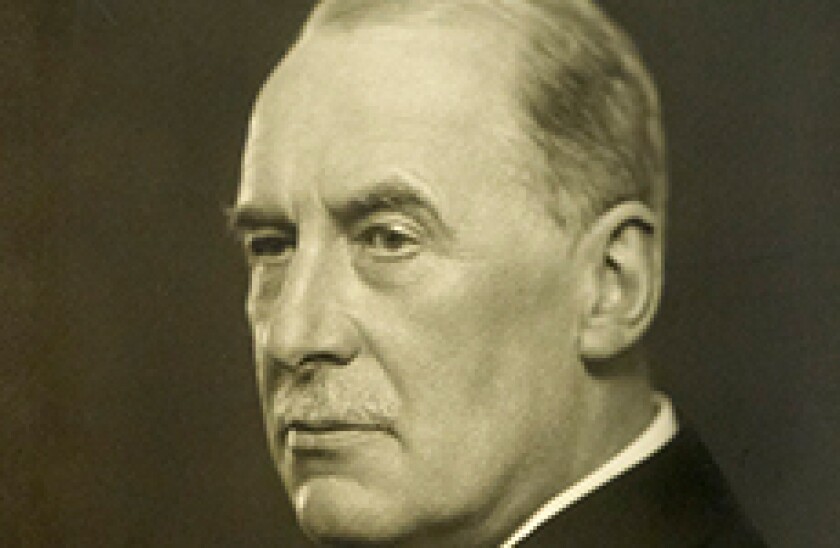by Professor Richard Roberts, King’s College London
Barclays Bank was created in 1896, an incorporated association of a dozen small Quaker family banks. But then chief executive Frederick Goodenough, a hard-driving autocrat who limited board meetings to 20 minutes, turned Barclays into one of the ‘Big Five’; by 1920 it had a national network of 1,800 branches, a fifth of England’s total. They provided domestic commercial banking, and, from the 1960s, pioneered retail banking for Britain’s ‘unbanked’ multitude. In much of the post-war era Barclays has been The UK’s foremost domestic bank, its strategic cornerstone.
Goodenough pursued overseas acquisitions following a government ban on further UK bank consolidation. The bank’s various interests, mostly focused on Africa, were amalgamated in 1925 as Barclays Bank (Dominion, Colonial and Overseas) a majority-owned subsidiary; in 1971 Barclays took full ownership and DCO was renamed Barclays Bank International. For many years Barclays was the world’s most international bank; at the peak around 1980 it had 2,100 overseas branches — at the time more than all US banks added together.
The jewel in DCO’s crown was National Bank of South Africa, the country’s biggest bank, which accounted for half of DCO’s business, though DCO also operated in east and west Africa and elsewhere.
All in all, from the 1920s to the 1970s Barclays’ African operations comprised a quarter of the group’s staff and branches and generated 10-20% of profits. In the 1970s Barclays became a prime target of the anti-apartheid movement in the UK and the US. The bank resisted dis-investment, arguing that its non-discriminatory conduct of business and economic contribution benefited black South Africans. Nevertheless, it ran down its proportionate shareholding in National Bank by passing-up rights issues; by 1985 its interest was down to 40%. The following year, under mounting political and commercial pressure, Barclays exited South Africa at a fire-sale price.
As Barclays headed out of South Africa, it was forging a new presence in investment banking; the key step was the creation in 1985 of Barclays de Zoete Wedd, made possible by London’s ‘Big Bang’ deregulation. Despite the mantle of Britain’s investment banking national champion, BZW spluttered commercially and generated internal disharmony. In 1997 exasperated chief executive Martin Taylor pulled the plug on BZW’s equity activities, exiting in another fire sale. The slimmed-down debt side of the business became Barclays Capital.
The demise of Lehman Brothers in 2008 provided ebullient BarCap boss Bob Diamond with an once-in-a-lifetime opportunity to double-down on Barclays’ investment banking business; the combined entity became Barclays Investment Bank, with 25,000 staff. But in 2012 Diamond was shown the door, a casualty of Barclays’ £290m fine for rigging the Libor interest rate.
In the meantime, Barclays had returned to South Africa. With the end of the apartheid government, it quickly re-established a presence in Johannesburg in 1995. ‘You should never have sold’, admonished President Nelson Mandela. Barclays evidently agreed and in 2005 it stormed back on a grand scale with the $4.5bn acquisition of a 56% stake in South Africa’s largest retail lender, ABSA (Amalgamated Banks of South Africa), constituting the country’s largest-ever foreign investment. Barclays’ other African operations were folded into ABSA, raising its interest to 62%; in 2013 it was rebranded Barclays Africa Group, reflecting its pan-African scope.
Following Diamond’s defenestration, it looked for a while as if Barclays was heading along an emerging markets trajectory and away from investment banking. But then in early 2016, Jes Staley, the new CEO and a former head of JP Morgan’s investment bank, unveiled an opposite strategy — to become Europe’s foremost investment bank. The counterpoint is a capital-liberating exit from Africa, beginning with sales that cut its BAG holding to 50.1%, with the apparent ambition of selling that controlling interest to a strategic buyer during 2017. The decision was partly attributed to post-crisis accounting reforms that increased the subsidiary’s burden to Barclays’ capital requirement.
The moves conjure a plurality of déjà vus, though of course contexts change over the years. So will it be Barclays’ final farewell to Africa and third time lucky for investment banking?






